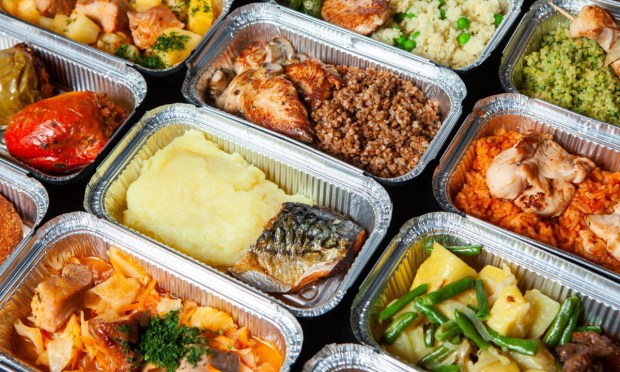Wonder Hopes Walmart Can Turn Grocery Shoppers Into Connected Diners

As consumers increasingly view their food habits not in disparate segments — grocery, restaurant, meal kit — but as one connected “eats” category, Wonder is seizing on the new dining opportunities this opens up.
The omnichannel food hall company, founded and helmed by Jet.com Co-founder Marc Lore, recently opened a location in a Walmart. Wonder Chief Marketing Officer and Chief Digital Officer Daniel Shlossman told PYMNTS in an interview that this will enable the company to link digital and on-site ordering occasions to consumers’ grocery and retail shopping routines.
“We do expect customers to place orders maybe when they are heading into the Walmart, and the food is going to be right there ready for them for pickup when they’re leaving,” Shlossman said. “We also see people that are maybe in the middle of running errands, and they’ve just made their Walmart run, and they can stop off and have a bite before they head to their next destination. So, we see lots of use cases.”
He added that, because the location enables consumers to place orders from multiple of the eight different restaurant brands therein at once, it multiplies the typical in-Walmart dining addressable market eightfold. Additionally, Shlossman noted, the retailer’s high foot traffic exposes more consumers to Wonder, in turn boosting their likelihood to order from the food hall for delivery when they get home.
Bringing It All Together
One of the ways that the company is blurring the lines is by folding meal kits into its overall business. Last fall, Wonder announced the acquisition of Blue Apron to create a “mealtime super app,” and Shlossman noted that the company is integrating meal kit ordering into its restaurant app.
At select locations, consumers can order Blue Apron meal kits from the food halls the same way they would order from any of the restaurant brands, he said, “which makes, for the first time ever, meal kits on demand available” outside of the subscription plans.
Consumers want to be able to conduct more of their digital commerce through unified platforms. The PYMNTS Intelligence study “Consumer Interest in an Everyday App,” created in collaboration with PayPal, noted that 35% of U.S. consumers expressed a strong desire for an everyday app. Of these, 67% said that they would want to be able to shop for groceries via this app, and 65% would want to be able to make purchases from restaurants.
In addition to this kind of horizontal integration, the company also prioritizes vertical integration, with Shlossman noting that it controls everything from “the sourcing of the ingredients to preparing the food to making it to order when the order comes in to handing it off in the store to a Wonder courier to it showing up on your doorstep.”
This approach enables the company to “understand the consumer through every single touch point,” he said, enabling more flexibility and agility, with the food hall provider able to make changes based on customer feedback at each step of the process.
Direct From the Source
Given this ownership of the process, the brand sees disproportionately high engagement with its direct ordering channels, which enables more data-gathering opportunities and in turn allows the brand to further strengthen those customer relationships, owning the transaction.
“Industry-wise, the bulk of a restaurant’s delivery business at most restaurants is built on the backs of the third-party marketplaces,” Shlossman said, noting that, when the pandemic accelerated digital ordering trends, these were the most feasible option for many brands. “I think best-in-class digital [brands] have a really great first-party experience, and they’re able to have that direct customer relationship even on something like delivery.”
He said more than 70% of Wonder’s delivery orders come through the brand’s in-house app.
Overall, third-party aggregators account for about 1 in 20 restaurant orders, according to PYMNTS Intelligence research from last year’s study “Connected Dining: Third-Party Restaurant Aggregators Keep the Young and Affluent Engaged.” In contrast, 14% of restaurant orders are placed online through restaurants’ direct ordering platforms, the study found.
One of the ways that the brand is looking to further increase engagement with its direct ordering platforms is through a paid membership program, Wonder+, currently charging $8 a month for free delivery and priority ordering at higher-throughput times.
Only a small share of consumers seeks out restaurant subscriptions, but these tend to be eateries’ highest-value customers, per PYMNTS Intelligence’s 2022 study “Digital Divide: Restaurant Subscribers and Loyalty Programs.” Specifically, only 17% of those surveyed said they were very or extremely interested in being provided a restaurant subscription service. Yet 73% of those interested consumers were very or extremely loyal toward their preferred quick-service restaurants (QSRs), while only 41% of those who were uninterested in subscriptions were similarly loyal.
Shlossman noted that, while engagement is varying location to location in the early stages of testing this program, retention rates after one-month free trials have been “really, really high,” and the program will likely continue to grow as the brand works toward its target of 25 new locations throughout this year.

